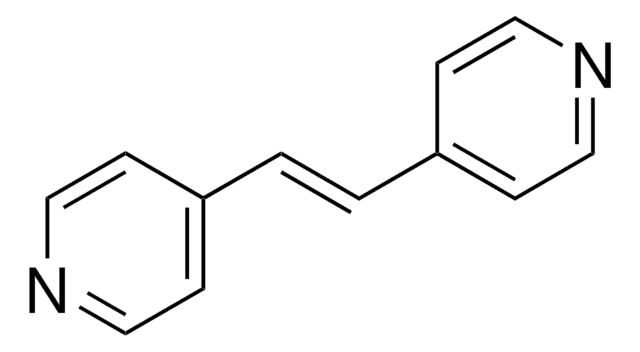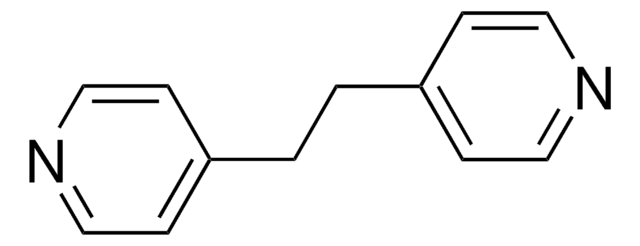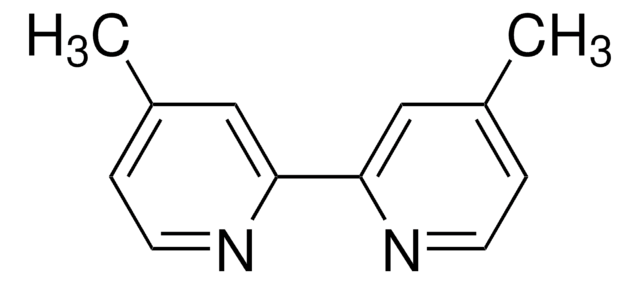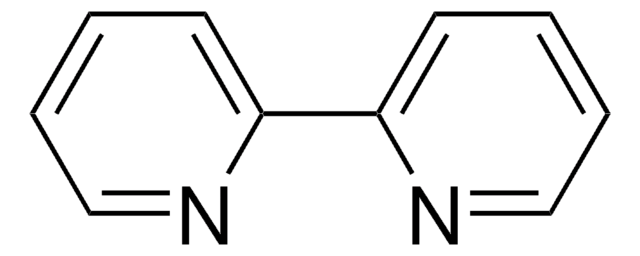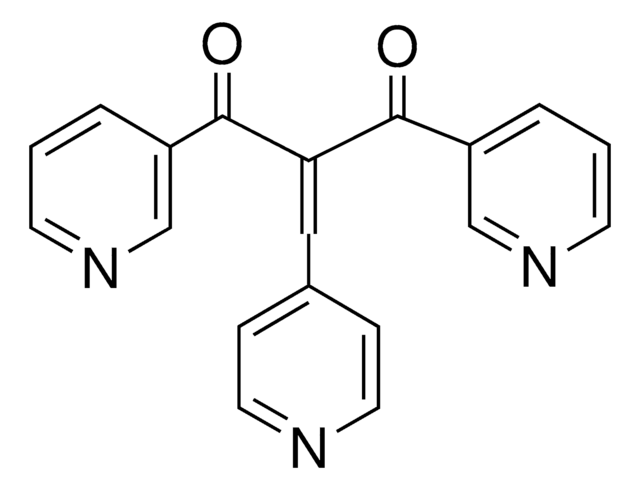121193
4,4′-Trimethylenedipyridine
98%
Synonym(s):
1,3-Bis(4-pyridyl)propane
Sign Into View Organizational & Contract Pricing
All Photos(2)
About This Item
Empirical Formula (Hill Notation):
C13H14N2
CAS Number:
Molecular Weight:
198.26
EC Number:
MDL number:
UNSPSC Code:
12352100
PubChem Substance ID:
NACRES:
NA.22
Recommended Products
Quality Level
Assay
98%
form
solid
mp
57-60 °C (lit.)
SMILES string
C(Cc1ccncc1)Cc2ccncc2
InChI
1S/C13H14N2/c1(2-12-4-8-14-9-5-12)3-13-6-10-15-11-7-13/h4-11H,1-3H2
InChI key
OGNCVVRIKNGJHQ-UHFFFAOYSA-N
Application
4,4′-Trimethylenedipyridine was used as ligand to study the solvent effects on the formal potential of redox-active self-assembling system [Os(bpy)2(dipy)Cl]1+ (bpy= 2,2′-bipyridine, dipy= 4,4′-Trimethylenedipyridine) in different organic solvents and aqueous solutions. It was used in the synthesis of two- and three-dimensional cadmium-organic frameworks.
Signal Word
Warning
Hazard Statements
Precautionary Statements
Hazard Classifications
Acute Tox. 4 Dermal - Acute Tox. 4 Inhalation - Acute Tox. 4 Oral - Eye Irrit. 2 - Skin Irrit. 2 - STOT SE 3
Target Organs
Respiratory system
Storage Class Code
11 - Combustible Solids
WGK
WGK 3
Flash Point(F)
Not applicable
Flash Point(C)
Not applicable
Personal Protective Equipment
dust mask type N95 (US), Eyeshields, Gloves
Choose from one of the most recent versions:
Already Own This Product?
Find documentation for the products that you have recently purchased in the Document Library.
Electron-transfer study and solvent effects on the formal potential of a redox-active self-assembling monolayer.
Acevedo D and Abruna HD.
The Journal of Physical Chemistry, 95(23), 9590-9594 (1991)
Xueling Shan et al.
Analytical sciences : the international journal of the Japan Society for Analytical Chemistry, 35(6), 639-644 (2019-02-13)
A novel electrochemiluminescence (ECL) sensor for detection of brilliant blue FCF (BB) has been developed using Ru@Zn-MOF/nafion modified GCE (glass carbon electrode) in this research. Different from conventional method for usage of Ru(bpy)32+ in solution-phase, Ru(bpy)32+ here was immobilized on
Filipe A Almeida Paz et al.
Inorganic chemistry, 43(13), 3882-3893 (2004-06-23)
Three novel cadmium-organic frameworks built-up from 1,3,5-benzenetricarboxylate anions (HXBTC(x-3)) and 4,4'-trimethylenedipyridine (TMD) have been hydrothermally synthesized, and characterized using single-crystal X-ray diffraction, thermoanalytical measurements, elemental analysis, and IR and Raman spectroscopies: [Cd(HBTC)(TMD)(2)].8.5H(2)O (I), [Cd(HBTC)(TMD)(H(2)O)].4.5H(2)O (II), and [Cd(2)(BTC)(TMD)(2)(NO(3))].3H(2)O (III), with structures
Our team of scientists has experience in all areas of research including Life Science, Material Science, Chemical Synthesis, Chromatography, Analytical and many others.
Contact Technical Service